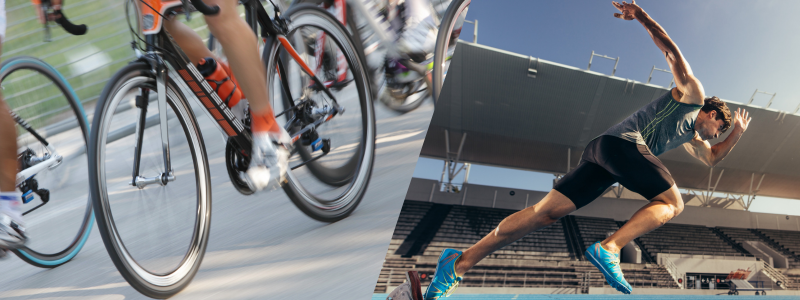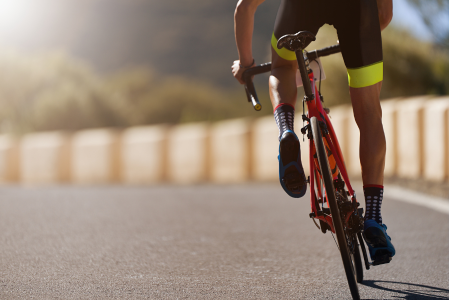Ankle Dorsiflexion: what is it and how does it affect athletes and sportspeople?

Ankle dorsiflexion ~ the flexion of the foot in the dorsal, or upward direction, refers to the movement of bringing the top of the foot towards the shin, and restricted dorsiflexion means limited ability to perform this movement.
Restricted dorsiflexion can have significant effects on sports people, so we’re taking a look at two different sports, examining the impact on runners and cyclists, considering biomechanics and efficiency of movement.
Runners
Stride Length and Efficiency - Restricted dorsiflexion can limit the ability of the foot to lift properly during the swing phase of running. This can lead to a shortened stride length and decreased efficiency of movement. Runners may compensate by overstriding or altering their gait pattern, which can increase the risk of injuries such as shin splints, plantar fasciitis, and stress fractures.

Dorsiflexion is crucial for maintaining ankle stability, especially during foot strike and push-off phases of running. Restricted dorsiflexion can compromise this stability, increasing the risk of ankle sprains and other lower limb injuries.
Restricted dorsiflexion can lead to muscle imbalances in the lower leg, particularly between the anterior and posterior muscle groups. This imbalance can result in overuse injuries and inefficient muscle recruitment patterns.
Cyclists
Pedalling Efficiency - Dorsiflexion is important for optimising the power transfer from the legs to the pedals. Restricted dorsiflexion can lead to inefficient pedalling mechanics, reducing power output and potentially causing premature fatigue.
Proper dorsiflexion helps in maintaining optimal knee alignment during the pedalling motion. Restricted dorsiflexion may force cyclists to compensate by altering their knee position, which can increase the risk of knee pain and injuries such as patellar tendinitis or iliotibial band syndrome.

Aerodynamics (yes, really!) - In a sport of marginal gains, don't rule this out! Limited dorsiflexion can affect the overall posture and aerodynamics of cyclists, especially during time trials or races where minimising air resistance is crucial. Compensatory movements due to restricted dorsiflexion may lead to suboptimal body positioning, impacting aerodynamic efficiency.
In both running and cycling, and many other sports besides, addressing restricted dorsiflexion through stretching, strengthening, and proper biomechanical adjustments can help improve performance, reduce the risk of injuries, and enhance overall efficiency of movement. It's essential for athletes to work with sports therapists, coaches, or specialists to develop targeted interventions tailored to their individual needs.


Comments